Partially Translated Isekai: Paul no Miracle Daisakusen
December 28, 2023
The coverage of anime before the 1980s in English can only be described as poor. Even such legendary creators as Tezuka Osamu and Matsumoto Leiji had manga adaptions in the ‘60s and ‘70s which lack complete translations to this day. For this reason, my knowledge of isekai anime from the period is frustratingly incomplete; the 50 episode Paul no Miracle Daisakusen is the oldest title I’m aware of, but it would therefore be very unwise of me to presume that it’s the oldest title of all.
Directed by Sasagawa Hiroshi (Casshan, Mach GoGoGo, Tokimeki Tonight), and airing in 1976, over six years before Seisenshi Dunbine, Paul no Miracle Daisakusen tells the story of a fairy in the form of a plush toy named Pakkun, who shows an imaginative boy named Paul, his friend Nina, and her dog Doppe, the way to another world.
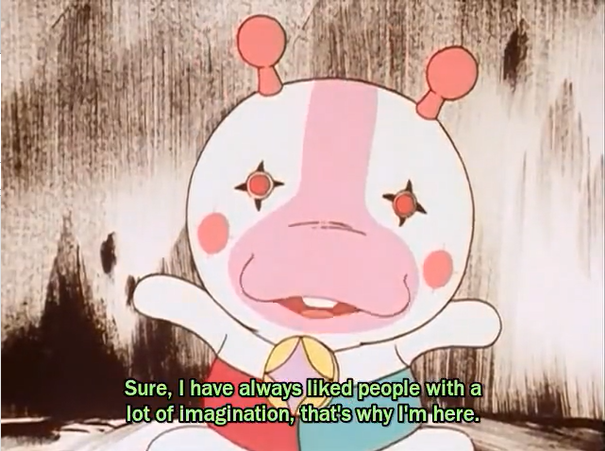
 Nina is kidnapped by the series’ villain, a menacing creature named Belt Satan, and Paul and Doppe (who can walk and talk, but only in the other world) spend the first third of the series trying to rescue her.
Nina is kidnapped by the series’ villain, a menacing creature named Belt Satan, and Paul and Doppe (who can walk and talk, but only in the other world) spend the first third of the series trying to rescue her.

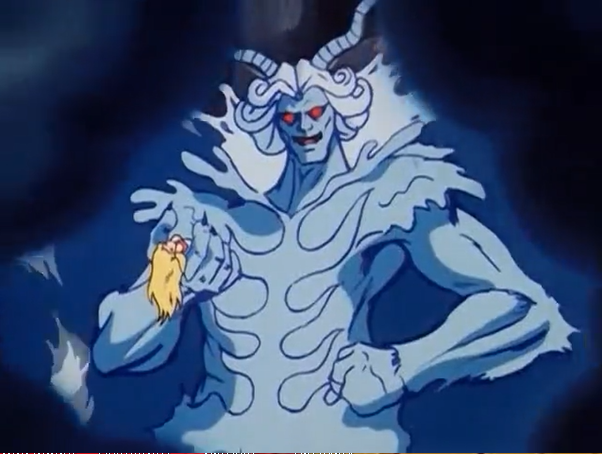
Insofar as the world is given a name (and in early episodes in particular, the dialogue is not always consistent), they call it “Fushigi no Sekai” – literally “the mysterious world”, but it is worth remembering that Alice’s Adventures in Wonderland in Japanese is called Fushigi no Kuni no Alice, more or less meaning “Alice of the Mysterious Country” and Lewis Carroll’s isekai story certainly gave this tale, and many others in Japan, its share of inspiration.
The show is very episodic – fairly typically, for the era which pioneered the monster of the week format – and the formula, as it works after the first episode, is worth describing here. The first scene is invariably spent on Earth, often with Paul trying to explain what happened to Nina, and those behind missing her or blaming Paul, especially in the earlier episodes. At times he is simply engaging in childhood activities – art class, soccer, a circus. Pakkun shows up and freeze time, often protecting Paul from danger in the process, and letting them know it’s time to go.
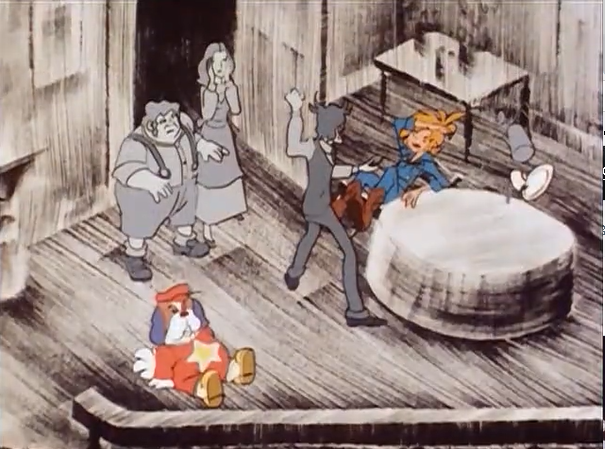
Where the series really shines is in the many countries of its very diverse other world, which are often related to events on Earth in some way – a thunderstorm leads to fighting the lightning devil, or a broken watch into a land of clocks. For isekai fans tiring of high fantasy, it’s an extraordinarily refreshing antidote, and much of the appeal of the show is in seeing where Paul and his friends will go next. One is reminded of how Kino no Tabi or Ginga Tetsudou 999 tell the story of visiting strange country after strange country… although, given that they’re gating into the other world every episode, perhaps Digimon Adventure 02 is a better comparison.
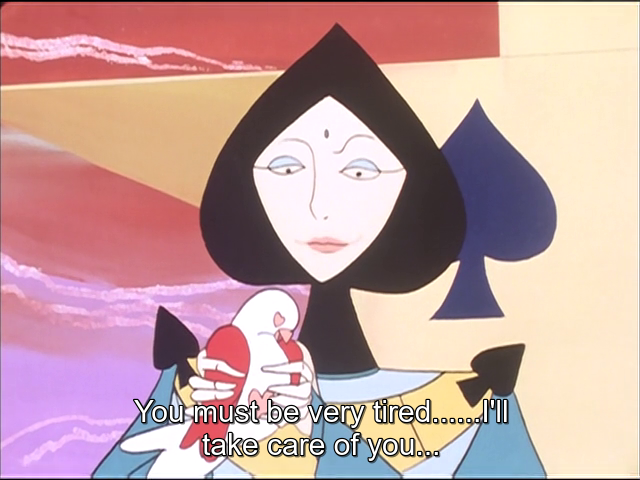
Whatever country they visit is menaced by Belt Satan and his monster of the day – and later, once Nina is rescued, a small creature named Chinoppi who looks like (but predates) something out of a Mario game.
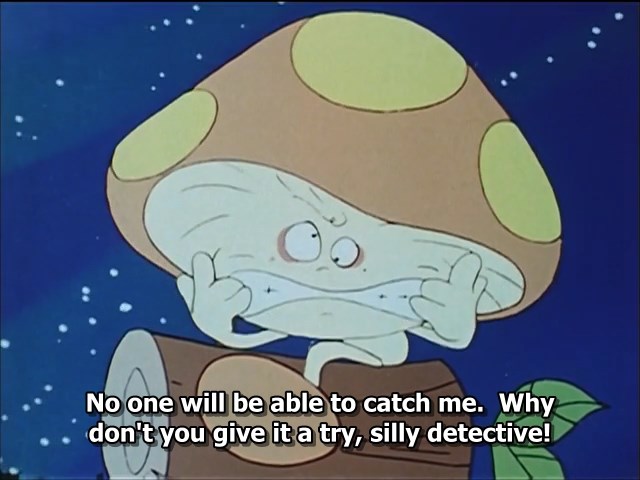 Paul must befriend the locals and help them fight back. This does not always go well; sometimes he’s caught in a prior conflict, or captured and taken hostage, either as a prisoner exchange or because his very presence means war. Nina often escapes temporarily to help out, and Paul tries, often in vain, to reunite with her. Pakkun can enlarge items, so a toy vehicle functions as a boat or an airship, while Paul’s yo-yo serves as his main weapon.
Paul must befriend the locals and help them fight back. This does not always go well; sometimes he’s caught in a prior conflict, or captured and taken hostage, either as a prisoner exchange or because his very presence means war. Nina often escapes temporarily to help out, and Paul tries, often in vain, to reunite with her. Pakkun can enlarge items, so a toy vehicle functions as a boat or an airship, while Paul’s yo-yo serves as his main weapon.

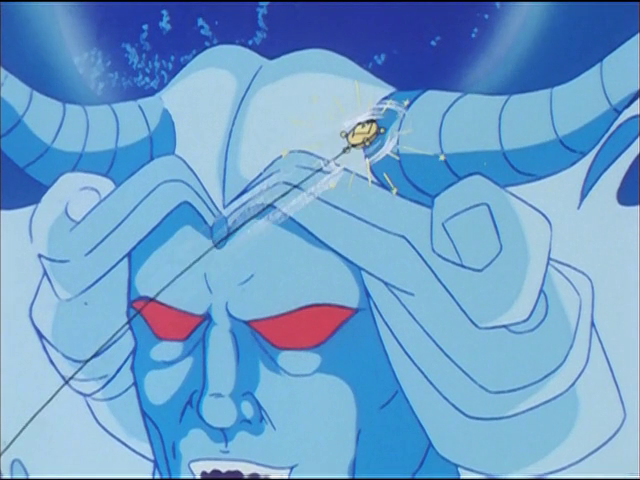
They can only stay in the other world for a limited time, and Pakkun eventually announces that time is up. Paul’s return often comes frustratingly early – on the cusp of rescuing Nina. In some of the later episodes, another human finds out about the other world and is taken along with Paul for the week, such as an old farmer who wished to stay and had to be forced back. Returning home generally allows Paul to resolve whatever problems he had been dealing with on Earth, but the most recently translated episodes show some concerning signs of Belt Satan’s influence extending beyond the gate.

Although I am grateful to Anonymous Russian Rippers to have the first 32 episodes of the series translated at all, I must warn that the English version of Paul no Miracle Daisakusen leaves something to be desired. The translation is inconsistent, occasionally using ‘Double’ for ‘Doppe’, among other lines here and there which I doubt, and the sub group is very pro-Putin and occasionally incorporates politically charged memesubs. The most recent batch of episodes dropped exactly two months before this post, the translation is ongoing, and I look forward to watching the conclusion.